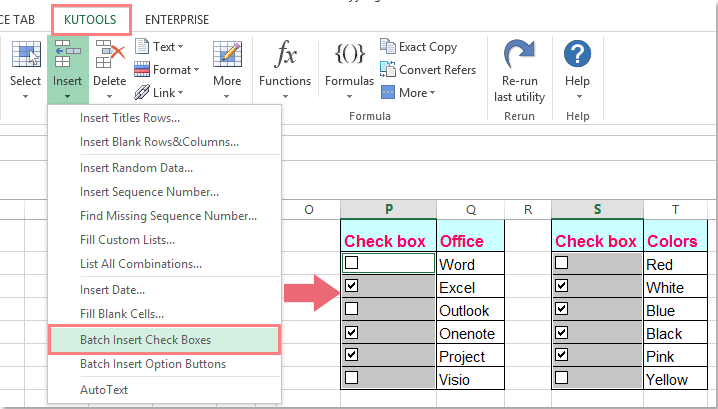How To Convert A Cell To Checkbox In Excel For Mac 2016

Question: How do I create a subscript value in a cell in Microsoft Excel 2016? Answer: Select the text that you wish to convert to subscript. This can either be the entire cell or only a character in the cell. While your mouse is over the selected text, right-click and then select 'Format Cells' from the popup menu. Excel 2016 can be tough to use. But you don’t need to be a spreadsheet jockey to get the most out of Excel 2016. Just follow these three tips. Microsoft Windows may get all the press coverage.
The tutorial will teach you how to quickly add multiple checkboxes in Excel, change the check box name and formatting, as well as delete one, several or all checkboxes on a sheet. In last week's tutorial, we stared to discuss Excel Check Box and showed a few examples of to create a beautiful checklist, conditionally formatted To-Do list, interactive report and a dynamic chart responding to the checkbox state.
Today, we will be focusing mostly on technicalities and how-to things. Of course, this information is not as exciting to learn as practical examples, but it will help you create and manage your Excel checkboxes in the most efficient manner.
Insert Checkbox In Excel
See solution in other versions of Excel: • • • • • How to open the VBA environment You can access the VBA environment in Excel 2016 by opening the Microsoft Visual Basic for Applications window. First, be sure that the Developer tab is visible in the toolbar in Excel.
The Developer tab is the toolbar that has the buttons to open the VBA editor and create Form/ActiveX Controls like buttons, checkboxes, etc. To display the Developer tab, click on File in the menu bar and select Options from the drop down menu. When the Excel Options window appears, click on the Customize Ribbon option on the left.

How To Checkbox In Excel
Click on the Developer checkbox under the list of Main Tabs on the right. Then click on the OK button. Select the Developer tab from the toolbar at the top of the screen. Then click on the Visual Basic option in the Code group. . Now the Microsoft Visual Basic for Applications editor should appear and you can view your VBA code.
